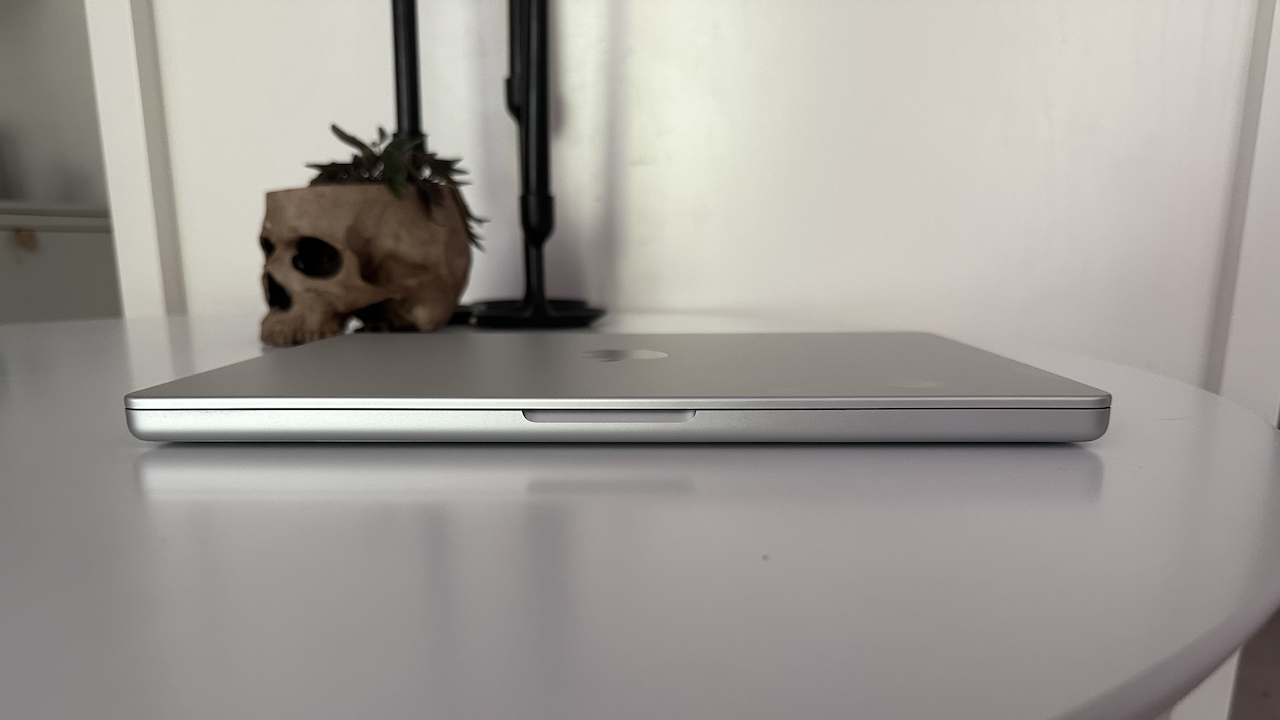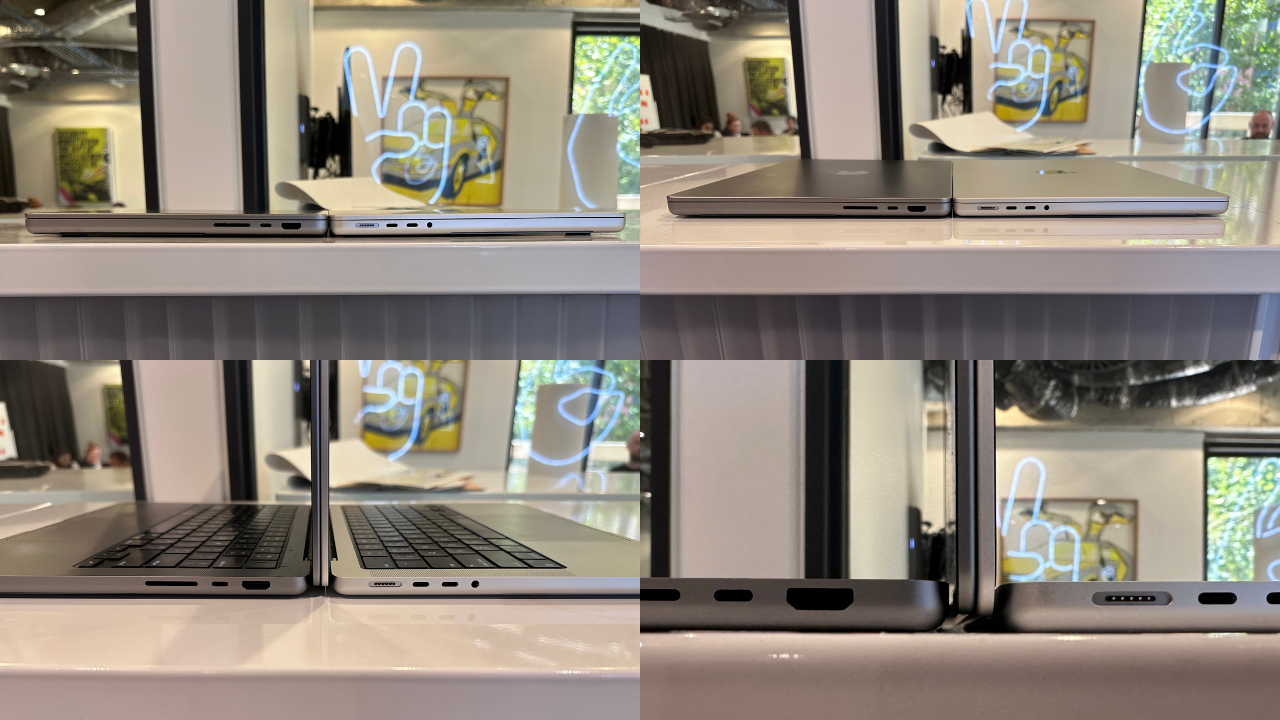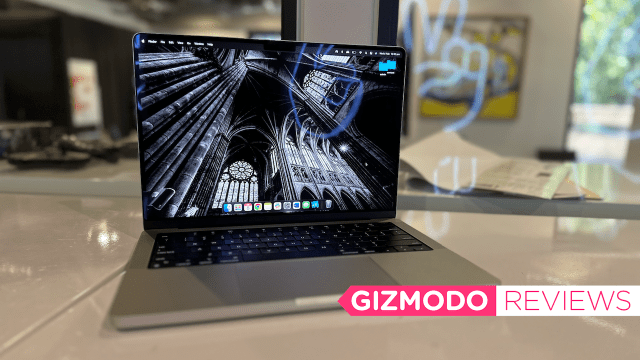Apple has started 2023 with a bang, last month finally giving its 14-inch MacBook Pro the upgrade it deserves with either the M2 Pro or M2 Max chip, which really are as impressive as the company says.
The last MacBook I reviewed was the 2021 14-inch MacBook Pro, featuring an M1 chip I thought was phenomenal. Despite all of the laptops that have come across my desk since this one, I’ve rarely wavered from this machine being the one I use for work. Considering this new 14-inch, M2 Pro chip-boasting MacBook Pro is its immediate successor, I thought an apples-to-apples (so to speak) comparison would be a worthy use of my time.
Apple’s 14-inch 2023 M2 Pro MacBook Pro
MacBook Pro with M2 Pro features a 10- or 12-core CPU with up to eight high-performance and four high-efficiency cores for up to 20 per cent greater performance over M1 Pro.
While we’re talking specs, it boasts 200GB/s of unified memory bandwidth (double the M2) and up to 32GB of unified memory. A GPU with up to 19 cores delivers up to 30 per cent more graphics performance (again, over its predecessor), and the Neural Engine is 40 per cent faster (think 40 per cent faster image processing in Photoshop).
By comparison, the M1 Pro topped out at a 16-core GPU and the M1 Max hit its cap at a 32-core GPU.
The pitch from Apple really is that this laptop will allow users to tackle large projects and run multiple pro apps with blazing speed. That the 2023 MacBook Pro is made for those that want to run video-heavy tasks and play some games while that project goes on in the background.

Immediate upgrade in speed and power
Using Migration Assistant, I basically made this new M2 Pro MacBook a carbon copy of the 2021 model. I thought from a review perspective I’d regret not starting fresh, but considering I could immediately feel how much better this new machine was, I’m glad I did.
The first thing I did was open Slack, and load an article to edit. Both of these tasks, although not at all an experience on the old MacBook Pro I’d ever call ‘laggy’, were performed with supersonic speed.
Here’s how that translates when we look at benchmarking.
Apple’s numbers match up with my experience:
- Geekbench 5.5.0 single-core score: 1874
- Geekbench 5.5.0 multi-core score: 14012
- Geekbench 5.5.0 OpenCL score: 46589.
Last year’s numbers look like this:
- Geekbench 5.5.0 single-core score: 1763
- Geekbench 5.5.0 multi-core score: 12573
- Geekbench 5.5.0 OpenCL score: 39178.
During the tab test (which is as simple as it sounds: load up as many YouTube vids as you possibly can and try not to cry at the sound), I got to 50 before I started to notice a lag. But the lag was also due to the office Wi-Fi struggling to keep up. By 58, I was presented an error message from YouTube that read: Audio renderer error. Please restart your computer.
It wasn’t overly laggy, I opened a new Chrome window, went to Gizmodo Australia and within 0.0002 seconds (estimation, but it was super fast), a full article had loaded. YouTube and/or the office Wi-Fi couldn’t keep up, the M2 Pro MacBook Pro, however, could. For comparison, the last laptop we put through the tab test was the Surface Laptop Pro 9, which started to stutter and ultimately freeze between 26 and 28 tabs.
All of this was done off power, of course.
It was really the 2021 14-inch MacBook Pro that showcased what Apple Silicon was capable of, both at the time and into the future. The laptop was just as powerful off power as it was on – a lot of people think off-battery just means the machine will eventually die, but you do in fact lose a lot of the grunt of the laptop. The 2023 14-inch MacBook Pro responded exactly the same on battery as it did plugged in, even when I was attempting to use Final Cut Pro (I have no idea what I’m doing in that app, btw).
When I say the new MacBook Pro is obviously faster than its predecessor, it’s not really something that can be captured in video – it’s microseconds, but still noticeable.
All-day battery life
In using the 14-inch 2023 M2 Pro MacBook Pro as a work machine, starting the day at 100 per cent (8 am), it wasn’t until 3 pm that I plugged it into power. I hadn’t run anything ridiculous, just did my usual Gizmodo Australia work, and by 3 pm the battery had dropped to 10 per cent. It wasn’t dead but I had a meeting at 3.15 pm that I couldn’t risk the battery dying during. That whole day, not only did battery last, but so did power.
On the 2021 model, after about four hours is when I reach for the charger, not seven. Granted, that’s a machine that has been used nearly every day for 16 months. Battery gonna do what battery gonna do.
Playing Avengers: Endgame via Disney+ over Wi-Fi in a Chrome browser, the MacBook Pro was reduced from 100 per cent battery to 76 per cent half-way through and 57 per cent by the end of the third hour. Not too bad at all.
Visually stunning, but much of the same
The more squared shape of the 2021 14-inch MacBook Pro still remains in the 2023 model. The size is the same, the ports are the same, the colour options are the same, the screen size is also the same, keyboard is (mostly) the same – but it’s still a teeny tiny bit different.
Moving through the four shots below, you can see the shell is the same for both models, and to the naked eye, it looks like everything is exactly the same. Until you go closer, like in pic four. The keyboard of the 2023 MacBook Pro is thinner, albeit only marginally.

It was only once I was adding images to this article that I realised just how different the display on the new machine is. The M2 Pro MacBook Pro laptop boasts a Liquid Retina XDR display, 3024-by-1964 native resolution at 254 pixels per inch. Images appeared sharper, less soft, and colours were brighter, more vivid in the M2 Pro MacBook Pro than in the M1 machine. The display appears a little brighter, too, which is great for working outside in the sun.
Something I try not to do is read reviews from my peers until after I’ve completed mine – but I was scrolling Twitter and came across remarks from someone that noted the new MacBook Pro was ‘hot’. It warms up quite a bit, but not more than the 2021 model. And unlike many a Windows machine, this thing doesn’t sound like you’re chilling in an aeroplane hangar. I wanted to address it, but it’s not something I’d consider hyperfixation-worthy.
My only complaint is that the sound is too quiet. I mostly have headphones in when listening to something via the laptop, but I’ve got to find something I don’t like, and this is it.
The new M2 Pro MacBook Pro isn’t for me
That’s somewhat of a misleading subheading, so I apologise. What I mean is that the user who will get the most benefit out of this new MacBook Pro is someone who hasn’t made the jump to Apple Silicon just yet.
That said, it’s hard returning to the M1 model after experiencing the sheer power this thing possesses.
If you’re someone who wants the best of the best, the 16-inch MacBook Pro with M2 Max might be for you, but the M2 Pro 14-inch isn’t exactly anything to scoff at. If you don’t need a new MacBook Pro, but you want one, you won’t be disappointed with Apple’s 2023 stock.
Where to buy the 2023 14-inch MacBook Pro with M2 Pro?
The configuration that I reviewed is the 12-core CPU, 19 core GPU, 14-inch MacBook Pro with M2 Pro. It will set you back $2,499. You can drop to a 10-core CPU, 16-core GPU model with half the storage (512GB) for $1,999. All models are available in Silver or Space Gray. Keep in mind Apple also dropped 16-inch models of the configs I detailed above, if you want a larger screen size.
All config options across the 14- and 16-inch 2023 MacBook Pro M2 Pro and M2 Max models are available to purchase via Apple right now.
